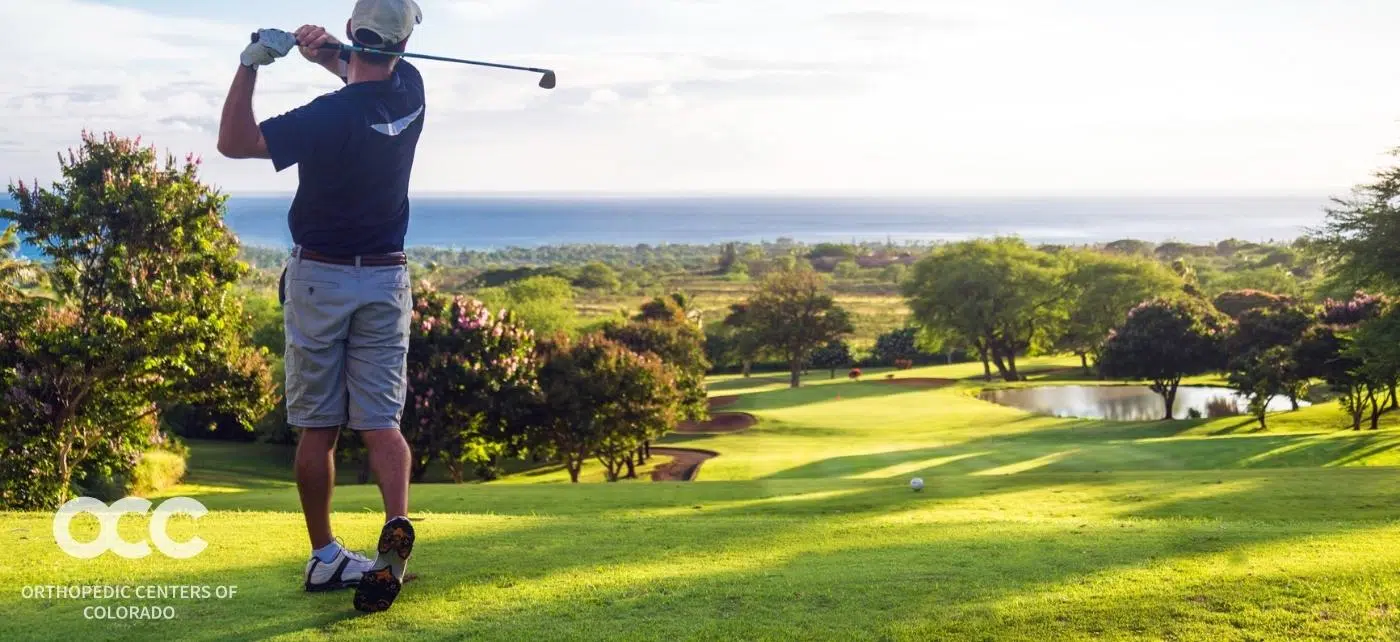Knee or hip pain can be excruciating, and when you are in pain, you want relief – pure and simple. And there is no shortage of advice on how to fix your joint problem, right? If your pain keeps you from being active, you’ve probably had plenty of advice from well-meaning friends, fellow sports enthusiasts, or family members – “you need surgery!” says one, “avoid surgery at all costs!” says another.
Knee and hip pain is very common, so it’s highly relatable, and everyone wants to empathize and help. But understanding what your pain means and determining your best treatment requires a partnership between you and your orthopedic physician.
We take great care to understand the story that your pain is telling and provide the care that is right for your personal situation. Sometimes, surgical procedures are the best solution. But, sometimes, a non-surgical solution is the better course of action.
How can non-surgical solutions be better? Let’s start with understanding the mechanics of both joints, knowing that both solutions have the potential to provide great relief and meaningful quality of life improvements.
Hips
The hip is one of the largest weight-bearing joints in the body. When it’s working properly, it lets you walk, sit, bend, and turn without pain. Unlike the shoulder, the hip sacrifices the degree of movement for additional stability. To keep it moving smoothly, a complex network of bones, cartilage, muscles, ligaments, and tendons must all work in harmony.
Knees
The knee joint is very complex and consists of the femur (thigh bone), tibia (lower leg bone), and patella (the kneecap). The knee relies on the surface cartilage of these three bones, as well as the menisci, to serve as shock absorbers and stabilizers that allow for a smooth, low friction surface for the knee to move on. The knee is further stabilized by ligaments inside and outside the joint and is surrounded by a capsule (envelope) that produces a small amount of lubricating fluid to help with smooth motion. We tend to ignore our knees until something happens to them that causes pain.
Understanding Your Options
As physicians, we’re committed to looking at all options in the priority that best fits what your body is telling us. Both knee and hip pain can occur for many reasons, and common causes include injury to or damage within the joint, arthritis, or from the incremental burden that excess weight puts on these weight-bearing joints. When pursuing non-surgical treatment, I often provide patients with a combination of solutions that best fits their situation, lifestyle, and objectives. The following three solutions provide excellent outcomes for many patients.
Physical Therapy:
Our in-house physical therapist partners create custom therapy regimens to build strength, increase range of motion, and, ultimately, reduce pain. Therapy sessions are frequently paired with heat, ice, or even nerve stimulation to reduce inflammation and increase circulation.
Injectables:
There are a number of treatments that involve injections into the joint site. Some, like lidocaine, are designed to control pain by masking the sensation. Others, such as steroids, reduce inflammation and pain. Another category of injections involves gel-like fluids, such as hyaluronic acid (known as viscosupplementation). Hyaluronic acid is a naturally occurring substance found in the synovial fluid surrounding joints. It can act as a lubricant to enable bones to move smoothly over each other and as a shock absorber for joint loads. People with osteoarthritis have a lower-than-normal concentration of hyaluronic acid in their joints. For some patients, adding hyaluronic acid to the arthritic joint can facilitate movement and reduce pain. Every patient’s circumstances and outcomes are different, but all of these non-surgical solutions have the potential to play a different role in helping to enable mobility and decrease pain.
Move More
It may sound counterintuitive, but we often find that the solution for some patients with chronic knee or hip pain is to move more. Paired with improved nutrition, exercise generates a dramatic reduction in pain through weight loss and enhanced mobility. Increasing movement – even if gradually over several weeks or months – significantly increases many patient’s range of motion, strength, and flexibility. And the impact can be exponential: for every 10 pounds of weight loss, there’s a decrease in joint pressure equivalent to 50 pounds!
We work with patients to identify plans to alter the body’s weight or muscle strength to relieve joint pain without ever requiring surgery. In tandem, pain management can reduce inflammation and allow your body time to recover, repair, and rebuild the strength to better support your body and relieve the condition.
Patients want to know their options, and, too often, they are not aware of non-surgical options that can greatly improve their daily life. We are able to collaborate with a patient to achieve results without ever undergoing surgery. Physical therapy and treatments such as acupuncture and other non-surgical therapy options are also viable options. It’s all about your situation and what’s best for you.
Sometimes surgery is required. When it is, wouldn’t you prefer to have the peace of mind that your physician has educated you about all of your options and helped you determine whether non-surgical or surgical treatment is best for you?
If you have a joint problem, contact one of our specialists for an appointment.

















